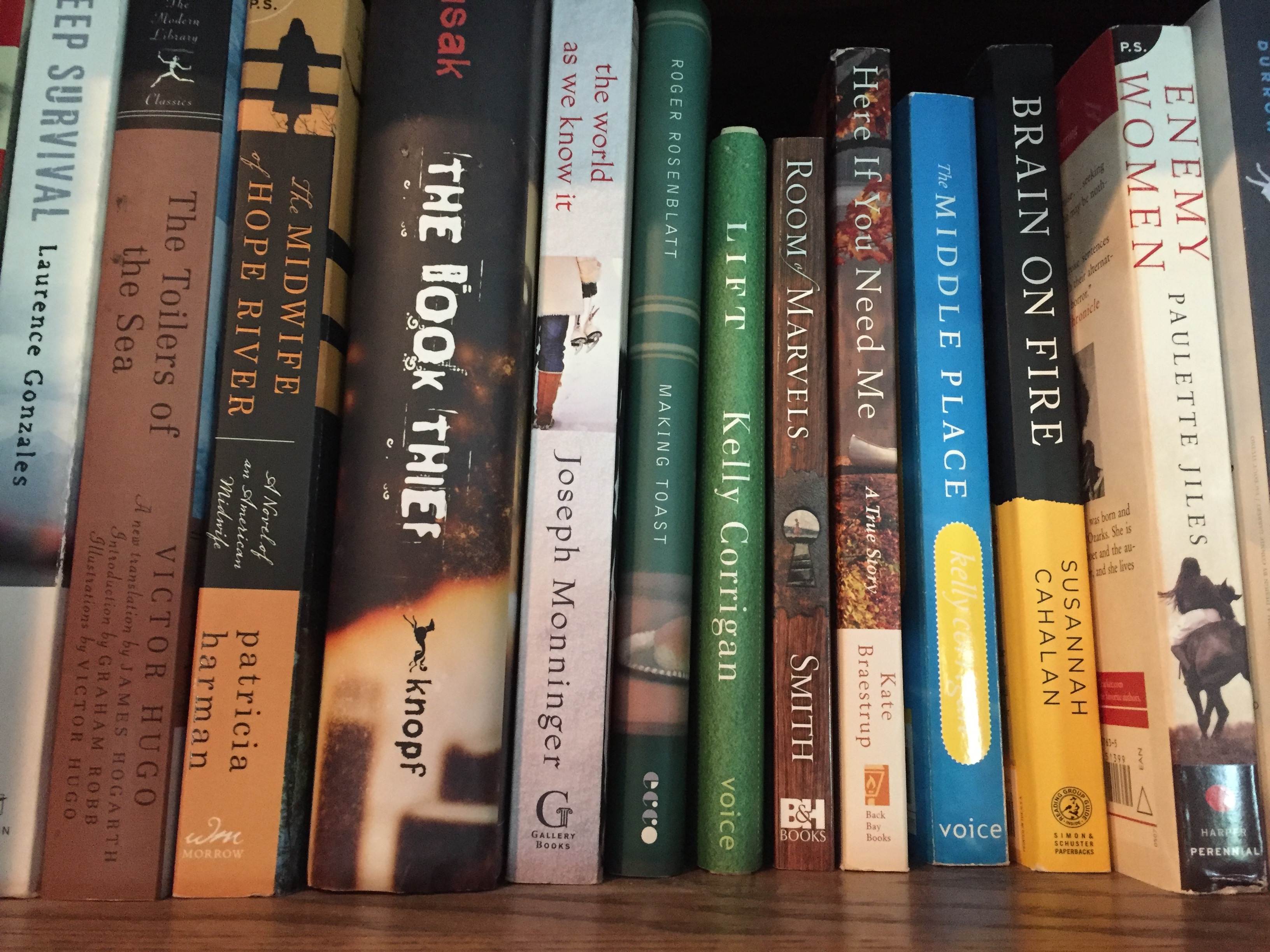The Great Unraveling

Here in the warm, fertile South, things grow. Our county fairs are famous for tomatoes, pumpkins, and melons of mammoth proportions. My grandma’s house in the Florida panhandle sported a sleeping porch that was all but taken over by philodendron vines that crept and spread, covering each wall. One night spent out there beneath the green ceiling and your subconscious would swim with humid jungle scenery, spurred by the nocturnal buzz and chirp of frogs and cicadas.
You’d think, surrounded by such constant, urgent growth, I’d be more attuned to change, that it would be less of a personal affront. And yet.
A few years ago, in the space of a few months, my oldest got married and moved out of state, my youngest launched and started college, my husband and I sold the business we’d run for 20+ years, we turned 50, and my elderly father moved nearby. Shortly after the dust settled, we found ourselves slow blinking at each other over coffee one morning. We’d reached our day of reckoning.
It’s been a solid two years of what I call The Great Unraveling.
When my son was young, he’d wake up in the night complaining that his legs ached. For weeks, he’d limp around the house, gingerly favoring this knee or that ankle. Growing pains, the pediatrician told us, and I’d laughed.
“Wait. That’s actually a thing?”
“Yep,” he’d assured me. “It’ll eventually stop. His insides are just stretching to keep up with his outsides.”
Sure enough, his pant size finally leveled out and I quit doling out a fortune for hardly worn jeans. He stopped at 6’2″, and it still startles me every time I have to crane my neck to look in the eyes of the young man I used to walk hand-in-hand with across parking lots.
In the Great Unraveling, it felt like that. Achy and unstable. We’d done too much all at once and our insides were not keeping up with the outside. All of it was what we’d worked toward and hoped for, yet we were as disoriented as if we’d leapt from a whirling merry-go-round, staggering around like drunks with arms akimbo. And, for the love, where were all these tears coming from, spilling forth unbidden from some infinite inner spring?
Lou Holtz, the Notre Dame football coach, is credited with saying if you’re not growing, you’re dying. Well, Lou, sometimes growing feels like you’re dying. Moving away from what’s known and comfortable to uncharted and untamed territory can trigger staggering grief. Even the ancient cartographers knew: there be dragons.
A curious emotional cauldron bubbled within, a witch’s brew of joy and excitement for my kids’ futures, and a deep and marrow-filling sorrow at their departure. The same was true for my own self: eager anticipation for how my marriage might deepen and grow, given the extra hours we’d have now that it was just us again, paired with the struggle of renegotiating roles, schedules, and what a given day might look like now that we shared the same work space, absent of children.
What was next for me? Now that my days were untethered from my kids’ schedules and needs, now that our professional and financial lives looked different, what might I discover, pursue, try? Quite a bit, it turns out. I wrote a novel, began a second, started mentoring younger families with kids and hosting a thriving group of newly married couples. I had plenty of time to read, write, think, and connect with others. I found lots more time for the garden, creativity, and plain old leisure, which I’d almost forgotten about.
Undertakings, you might call them, all these new activities. It’s a curious word since an undertaker is typically one who deals with the dead. I suppose that’s who I’d become, in this new space, mourning what had passed, offering comfort to who and what remained, and ushering in what was to come next.
“What’ve you been up to, mom?” I imagined my children asking.
“I’ve become an undertaker.”
“Okaayy. Is dad home?”
The only one who likes change is a wet baby, Mark Twain famously said. That’s true, while it’s happening. It’s on the other side of change where we find ourselves marveling at why it took us so long to get here in the first place. Who knew we’d love sushi? Or enjoy taking walks with a friend? Or actually settle into not having to know what the kids were doing or who they were with and could trust them to get the oil changed and get a haircut? Because they were changing, too, growing madly into new versions of themselves and shucking their childish skins like a heavy coat on a warm day.
I never would have thought, at first, that I’d be savoring this new, delicious way of being and discovering, just the way I’d relished the loud and busy days of before. Maybe it was the cynic or pessimist in me who’d questioned whether anything could match what we already had, who kept posing the question “what now?” in an irritable, can’t-be-bothered tone instead of an eager “what’s next?”
It occurred to me that just as the pediatrician used to mark my kids’ milestones and percentiles, I might measure my own growth this way. What can I do this year that I couldn’t six months ago? Am I trying something new? Conquering fear to take a brave risk? Bursting into tears less often? Baby steps.
Somewhere along the way, babies quit opening their mouths like trusting little birds when we aim the spoon their direction. They develop suspicion and guard against what they’ve learned might be yucky or what could be good but what’s probably strained peas. They turn their heads with clamped lips and refuse to try.
For a good part of the Great Unraveling, I turned my head and refused. I wasn’t about to get a mouthful of peas when what I wanted, what I yearned for was pears and ice cream. I was, in other words, a big baby. I pouted, sulked, withdrew, and cried. I moped, slouched, sighed, and frowned.
All the emotional turbines churned, and maybe there’s a place for that. Maybe we have to sit with that a minute (or a week or month or more) and bear witness to all the feelings that arise with gravity-shifting change. I observed all the big emotions as they unwound themselves and noticed them gently. I didn’t accuse, belittle, or dismiss any of them. Being unspooled is a vulnerable place to be, and vulnerability needs to be met with kindness, above all. Fellow travelers in the same boat are excellent companions for this, by the way.
But the unspooling leaves you with work to be done. It leaves you with a heap that must be rewound and reworked into something new. Made of some of the same material, no doubt, and colored with what came before, but an entirely different creation. Not pears and ice cream, but not exactly strained peas either.
Crossing these thresholds of the “what was” and “what’s next” requires some of the toughest growth there is. Our limbs and hearts ache with it as we resist, or at best, struggle to keep up. Liminal spaces like these are sacred, holy ground. They are where the unraveling occurs and where we discover what anchors us, what tethers remain, and what we’re capable of, still. The author and theologian Richard Rohr, warns us, despite the pain and discomfort, to find these sorts of spaces regularly. Actually seek them out on purpose. He urges us to “get there often and stay as long as you can by whatever means possible” because if we don’t find such thresholds in our lives, “we start idolizing normalcy.”
And, boy, if 2020 taught me anything, it was how much I was infatuated with normalcy. How, in the end, we’re all pretty much avoiding the peas and stomping our feet about the ice cream we’d expected.
I think perhaps, for me, this particular Great Unraveling is nearing an end, for now. As I spend time with my aging father, I can easily see others on the horizon, and I resolve to approach them with less resistance and more purpose next time around. The decades unfold and the only constant is, of course, change. We help one another over the thresholds, saying watch your step and, with a sweep of the arms, welcome, welcome.



